
Five Rules For Reducing Clutter
In Your Home
Here are five rules, or strategies, for reducing clutter in your home slowly, but surely, without you really noticing it.
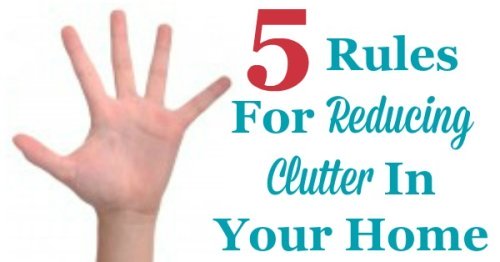
Each of these rules is listed in the handy infographic to the right (so please pin it if you find it useful!), but I'll explain each of them in more detail below.
Rule 1: One In, Two Out
I think most people have heard of the one in, one out rule. This rule is great once you've actually finished decluttering a space, so you can keep it that way.
Basically, the one in, one out rule is that if you bring one object in your home, you've got to declutter an older similar type of object, such as replacing an old pair of shoes with a new one.
However, when you're still in the process of reducing clutter a better rule is one in, two (or even three) out! This will not just keep the number of items constant in your home, but actually begin to reduce them!
Rule 2: Deal With Clutter As It Comes In The Door
One of the prime culprits for clutter is all the stuff we mindlessly bring into our homes as we come in the door at night, hurried, harried or exhausted.
If you make a point of dealing with things as they come in the door, from junk mail, trash from the car, etc. you'll go along way toward reducing the total amount of clutter in your home.
That's why rule two is to make a habit of dealing with items at the door! Examples of this could be putting a shredder by your door, where you sort the junk mail straight to the trash and shredder instead of bringing it in, and putting it in a pile.
Rule 3: Ruthlessly Deal With Piles
Speaking of piles, every time that you notice that a pile is forming somewhere on a flat surface of your home, you know you've got a clutter problem.
Piles mean that there is no place for the items that are making up the pile, and when an object does not have a home it is, by definition, clutter.
The goal in a decluttered home is "a place for everything, and everything in its place." So, rule three for reducing clutter is to be ruthless in dealing with piles since they, be definintion, don't have a place.
If you don't think the items in the pile are clutter make the time to make a place for them in your home. If that means you've got to declutter something else to make room, so be it. Something has got to go whenever piles are forming!
Rule 4: Have A Donate Box Ready At All Times
The fourth rule for reducing clutter is to be ready at any time to declutter, as you decide you don't want something in your home anymore.
In addition to a donate box, you could also have, for example, a consignment shop or garage sale box, and a give to your friends or family box.
The point of these boxes is to not think, over and over, "I really need to get rid of this __________ (fill in the blank)." Instead, the first time you make the decision that you don't want it anymore go to your decluttering center and place the item in the appropriate box.
These boxes should be located in a convenient area you can access easily, such as in the corner of a closet or in a storage room.
Here's a whole article about how to set up a clutter donation box, along with ideas of where to put it in your home.
Rule 5: Make Decluttering A Habit
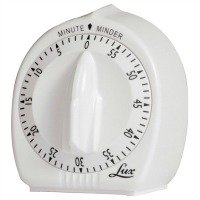
The final rule for reducing clutter in your home is to make the decluttering process a habit.
Not only do you need to put things in your donation box when you think of it (like rule 4), you've got to make just a little bit of time here and there to deal with your possessions, to pare them down.
If you can just declutter for 15 minutes a day, consistently, you won't notice much difference at first in either time spent or results, but that time and effort does, in fact, add up quickly. Then, you will begin to see results.
In one week, for example, with just 15 minutes of decluttering daily, you would have decluttered for one hour and 45 minutes. In addition, over the course of 30 days you'd have decluttered for seven and a half hours! That's like a whole day of decluttering!
This last rule is so powerful that I now run the Declutter 365 missions year round on the site. It's exactly what it sounds like, one 15 minute mission per day, 365 days a year, that will, over the course of the year, help you declutter your entire home.
You can get a full year's calendar of these missions here, for free, when you sign up for the site's newsletter.
In addition, if you'd like daily encouragement and reminders of the missions, I've created a closed Facebook group called Declutter 365 Premium which follows along with the Declutter 365 mission schedule.
In that group I post each day's mission to help remind you of the challenges and missions, and keep you on track. In this group I also provide weekly live video sessions to discuss the week's missions, and have a question and answer session.
This premium Facebook group is only available as a bonus for my monthly Patreon patrons. You can find out more about how to become a monthly patron here.

What's Next In The Decluttering Your Home Series?
We're getting towards the end of the practical tips for how to declutter your home now.
In fact, next week is the last week of these practical tips, where we'll talk about clutter control once you've gotten things in your home basically decluttered, so you can keep it that way.
Then, after that, in later parts of the series, as it winds down, we'll talk a bit about the mechanics of how to get all the stuff you're decluttering out of your house, such as by donating it, garage and yard sales, and more.
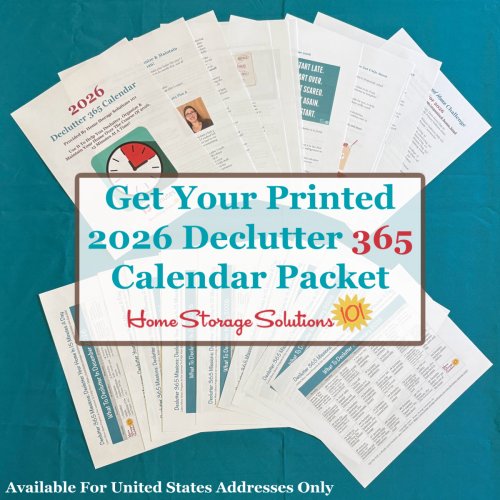
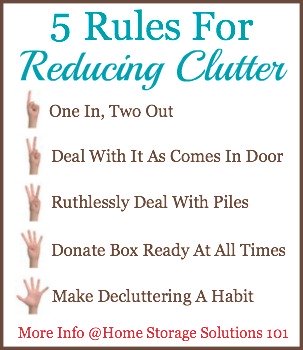


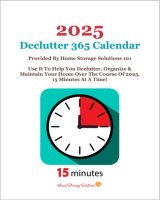
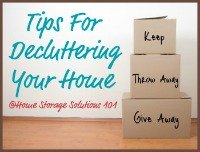
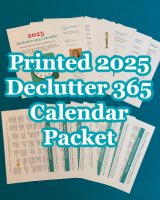
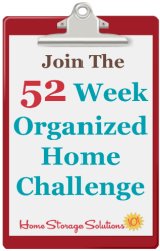



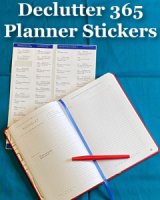

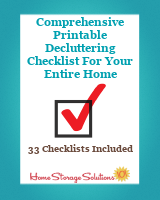




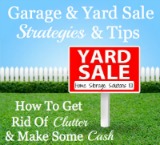
Share Your Comments, Tips & Ideas
I would love to hear from you, sharing your thoughts, questions, or ideas about this topic, so leave me a comment below. I try to always respond back!